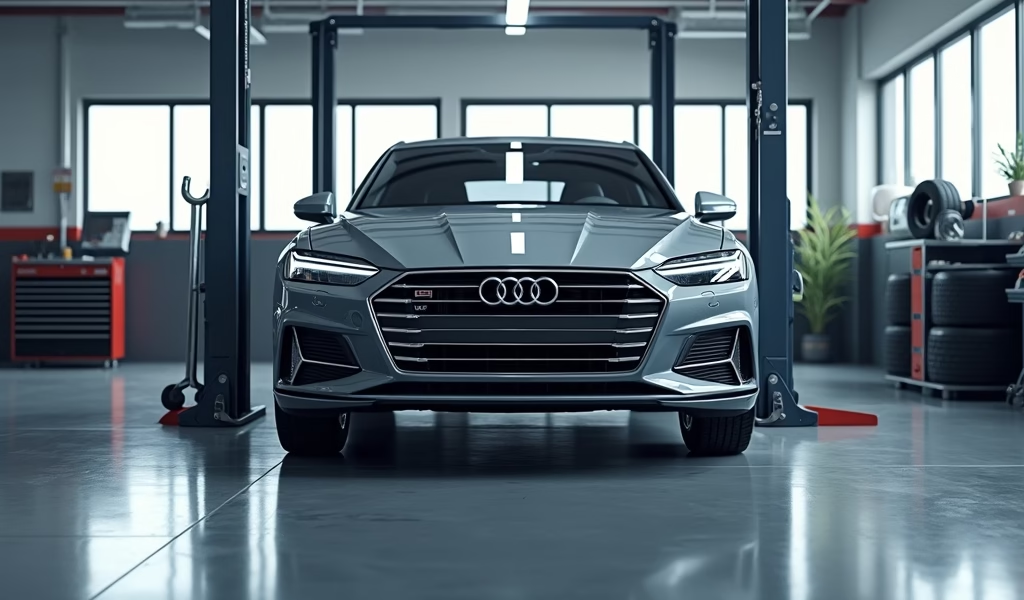Overview
This article emphasizes the critical importance of following a regular vehicle maintenance schedule to prevent costly repairs, ensure safety, extend vehicle lifespan, and save money over time. It provides detailed guidance on essential maintenance tasks (oil changes, tire care, fluid checks), seasonal considerations, creating a personalized maintenance calendar, knowing when to DIY versus seek professional help, and understanding the significant cost difference between preventative maintenance and major repairs.
Table of Contents
- Why Regular Maintenance Matters
- Understanding Your Vehicle’s Maintenance Schedule
- Essential Maintenance Tasks and Their Timelines
- Seasonal Maintenance Considerations
- Creating Your Personalized Maintenance Calendar
- When to DIY vs. When to See a Professional
- The Cost of Maintenance vs. Repairs
- Conclusion
- Frequently Asked Questions
Your car deserves better than crossed fingers and wishful thinking. I’ve spent 20 years under hoods watching preventable $3,000 repairs unfold from neglected $30 maintenance tasks. The truth? Your vehicle is silently begging for routine care through subtle hints most drivers miss until something fails catastrophically. A well-maintained car isn’t just about avoiding that dreaded roadside breakdown – it’s about safeguarding your family, protecting your investment, and ensuring that faithful machine is ready when you need it most. Let me share what decades of grease under my fingernails has taught me about keeping your wheels rolling smoothly for years to come.
According to a recent study by the Car Care Council, a staggering 84% of vehicles on the road today are in need of some form of service or repair. The kicker? Most of these issues could have been prevented with regular maintenance. Think of your car as a complex ecosystem – when one component begins to fail, it creates a domino effect throughout interconnected systems.
Let’s drop the mystery and confusion surrounding car maintenance scheduling and create a simple roadmap to keep your vehicle running at its best without breaking the bank. I promise no unnecessary upsells – just honest, proven advice from someone who’s seen it all.
Why Regular Maintenance Matters
I still remember Tom, a customer who ignored his oil change light for nearly 15,000 miles. “It still drives fine,” he insisted. Three weeks later, he was staring at a seized engine and a $4,700 repair bill. Regular maintenance isn’t a suggestion – it’s the difference between a vehicle that lasts 100,000 miles and one that sails past 300,000.
Safety is non-negotiable. When your brake pads wear thin, your stopping distance increases dramatically. That extra 15 feet could mean the difference between a close call and a serious accident. Every maintenance task connects directly to your family’s safety on the road.
Your wallet also benefits from a proper maintenance schedule. Think of it as paying a small, predictable amount now or a large, unexpected amount later. A timing belt replacement might cost $600-900, but if it breaks, the resulting engine damage can exceed $3,000. The math is simple.
Environmental impact matters too. A well-maintained vehicle runs more efficiently, consuming less fuel and producing fewer emissions. According to the EPA, regular maintenance can improve fuel economy by up to 4% – savings that add up over thousands of miles.

Understanding Your Vehicle’s Maintenance Schedule
Your owner’s manual is gold. Not the car salesperson, not your friend with “car knowledge,” and sometimes not even every mechanic knows better than the engineers who designed your specific vehicle. Manufacturers create detailed maintenance schedules based on extensive testing and analysis of each component’s lifespan.
Can’t find your manual? No problem. Most manufacturers offer digital versions online – just search your make, model, and year. Alternatively, reputable automotive resources provide general guidelines for most vehicles.
Here’s something many drivers miss: most vehicles have two maintenance schedules – “normal” and “severe.” Despite what the names suggest, most of us fall under “severe” conditions. If you make frequent short trips (less than 10 miles), drive in extreme temperatures, face dusty conditions, idle extensively, or regularly drive in stop-and-go traffic, you’re in the severe category. This means more frequent service intervals to keep everything running smoothly.
Modern vehicles increasingly include maintenance reminder systems that track your driving habits and alert you when service is needed. These systems are surprisingly accurate and worth paying attention to. They’re based on algorithms that consider your specific driving patterns rather than simple mileage calculations.
Essential Maintenance Tasks and Their Timelines
Oil changes remain the cornerstone of proper maintenance. Think of oil as your engine’s lifeblood – it lubricates, cools, and cleans. Modern synthetic oils have extended change intervals to 5,000-10,000 miles for many vehicles, but this varies dramatically based on your specific model and driving conditions. Checking your oil level monthly can help catch potential issues early.
Tire care is criminally overlooked. Your tires are literally where the rubber meets the road, and they affect everything from safety to fuel economy. Rotate them every 5,000-8,000 miles to ensure even wear. Check pressure monthly (including the spare) – proper inflation improves safety, extends tire life, and enhances fuel economy. A simple penny test can check tread depth – if you can see the top of Lincoln’s head when inserted into the tread, it’s time for new tires.
Brakes deserve special attention. Most brake pads need replacement every 30,000-70,000 miles, but this varies widely depending on driving habits. Listen for squealing or grinding noises, and pay attention to how the brake pedal feels. Brake fluid should be changed every 2-3 years regardless of mileage because it absorbs moisture over time, compromising its effectiveness.
Your vehicle relies on six critical fluids that require regular checks:
- Engine oil – Lubricates moving parts
- Coolant – Prevents overheating and freezing
- Brake fluid – Transfers force to brake components
- Power steering fluid – Assists steering effort
- Transmission fluid – Lubricates and cools transmission components
- Windshield washer fluid – Maintains visibility
Filters are your vehicle’s defense system. The oil filter should be replaced with every oil change. The engine air filter typically needs replacement every 15,000-30,000 miles. The cabin air filter (which keeps the air inside your car clean) should be replaced annually or every 15,000-25,000 miles. A clogged fuel filter can starve your engine and typically needs changing every 30,000-60,000 miles.
Battery maintenance is simple but crucial. Modern batteries require less attention than their predecessors but should still be inspected annually for corrosion. Most batteries last 3-5 years, with extreme temperatures significantly shortening lifespan. A regular maintenance check should include battery testing after 3 years of use.
Belts and hoses are the unsung heroes under your hood. These rubber components should be inspected annually for cracks, fraying, or leaks. The timing belt (if your vehicle has one) typically needs replacement every 60,000-100,000 miles. This is one maintenance item you don’t want to ignore – if it breaks, catastrophic engine damage often follows.
Seasonal Maintenance Considerations
Spring is the perfect time to recover from winter’s harshness. After months of salt, slush, and freezing temperatures, focus on:
- Thoroughly washing the undercarriage to remove corrosive road salt
- Replacing winter-worn wiper blades
- Checking alignment and suspension after winter pothole season
- Testing air conditioning before summer heat arrives
Summer brings its own challenges. Before heading out on road trips or facing heat waves, prioritize:
- Cooling system inspection to prevent overheating
- Battery testing, as extreme heat accelerates battery failure
- Checking tire pressure, as hot roads cause pressure increases
- Ensuring all lights work for those late summer night drives
Fall preparation focuses on getting ready for colder weather:
- Testing heater and defroster systems
- Checking battery strength before cold morning starts
- Inspecting tires and considering winter tires if applicable
- Ensuring all exterior lights function properly during shorter days
Winter demands special attention in many regions:
- Verifying antifreeze protection level for your climate
- Switching to winter-weight oil if recommended
- Maintaining proper tire pressure as cold weather causes pressure drops
- Carrying emergency supplies including blankets, flashlight, and snacks

Creating Your Personalized Maintenance Calendar
Technology makes tracking maintenance easier than ever. Apps like CARFAX Car Care, aCar, and Drivvo can send maintenance reminders based on your specific vehicle. Many modern cars connect directly to manufacturer apps that provide real-time maintenance alerts based on actual vehicle data.
The ideal reminder system, whether digital or analog, should include:
- Records of all maintenance with dates and mileage
- Alerts for upcoming service based on time or mileage
- Details like filter types and oil specifications for easy reference
- Storage for receipts to maintain warranty coverage and resale value
Building a relationship with a trusted mechanic is invaluable. Find someone willing to help you prioritize maintenance based on your specific vehicle’s needs and your budget. Many reputable shops offer maintenance tracking services for regular customers, sending reminders when service is due.
I always recommend scheduling your next maintenance appointment before leaving the shop. This simple habit ensures you don’t forget and helps you maintain a consistent maintenance checklist for your vehicle.
When to DIY vs. When to See a Professional
Even if you’re not mechanically inclined, several important maintenance tasks are DIY-friendly:
- Checking and topping off fluids
- Replacing wiper blades
- Changing air filters
- Monitoring tire pressure
- Inspecting belts and hoses visually
- Replacing most bulbs (though this varies by vehicle)
However, certain warning signs demand professional attention:
- Dashboard warning lights
- Unusual noises, especially grinding or squealing
- Vibrations or pulling while driving
- Fluid leaks beneath your vehicle
- Smoke or unusual odors
- Any braking issues
Finding a trustworthy mechanic is crucial. Look for ASE certification, positive reviews, and clear communication. I always recommend starting with smaller services to test reliability before trusting them with major repairs. A good mechanic should be willing to show you the parts being replaced and explain exactly what they’re doing and why.
For specialized vehicles, seeking out technicians with specific expertise can save headaches. A specialist who understands your specific make will often spot potential issues that general repair shops might miss.
The Cost of Maintenance vs. Repairs
Let’s talk numbers. Regular maintenance is predictable and can be budgeted. Setting aside $500-1,000 annually covers most vehicles’ routine maintenance needs, though this varies by age, make, and model. Many drivers find success with monthly “car care” savings to smooth out larger service expenses.
For planning purposes, these ballpark figures help with budgeting (though prices vary by region and vehicle):
- Oil change: $30-80
- Brake pad replacement: $150-300 per axle
- Timing belt replacement: $500-1,000
- Tire rotation: $20-50
- Battery replacement: $75-200
- Fluid flush services: $100-250 each
Now compare those costs to repairs from neglected maintenance:
- Engine rebuild from missed oil changes: $2,500-5,000+
- Engine damage from broken timing belt: $2,000-4,000
- Transmission replacement: $2,500-6,000
- Brake rotor replacement (from worn pads): Additional $200-400
The financial math is clear – preventative maintenance wins every time. Even more importantly, breakdowns rarely happen at convenient times or locations. The peace of mind from a well-maintained vehicle is priceless when considering family safety and reliability.
Conclusion
After two decades helping drivers navigate car care, I’ve seen one truth repeatedly confirmed: those who follow a consistent maintenance schedule enjoy hundreds of thousands of trouble-free miles, while those who neglect it face a cascade of expensive repairs.
Your vehicle’s maintenance schedule isn’t just a suggestion – it’s a roadmap to protecting your investment, ensuring your safety, saving money, and extending your car’s lifespan. By creating and following a personalized maintenance calendar, you’re making a smart choice that pays dividends for years to come.
I encourage you to take a moment today to check your maintenance status. When was your last oil change? How’s your tire tread looking? Is that check engine light still on? Small actions today prevent big problems tomorrow.
Remember, your car can’t speak up when something’s wrong until it’s often too late. Regular maintenance is how you listen to what your vehicle is telling you before problems escalate.
What maintenance task do you tend to procrastinate on the most? Drop a comment below – you might find you’re not alone, and our community might have some helpful tips to make it easier!
Frequently Asked Questions
How often should I really change my oil?
Follow your vehicle’s owner manual recommendation, typically 5,000-10,000 miles for modern cars with synthetic oil. Severe driving conditions (short trips, extreme temperatures, towing) require more frequent changes.
Is the dealer service department worth the higher cost?
Dealers offer specialized knowledge and genuine parts but often at premium prices. For newer vehicles under warranty, dealer service ensures warranty compliance, while independent shops often provide comparable quality at lower costs for older vehicles.
Can I skip scheduled maintenance during warranty periods?
Absolutely not – skipping scheduled maintenance can void your warranty. Manufacturers require proof of proper maintenance when processing warranty claims.
How do I know if my mechanic is overcharging me?
Get written estimates before authorizing work and compare with other shops for major repairs. Reputable shops will explain exactly what needs fixing and why, showing you the worn parts when possible.
What’s the single most important maintenance task for extending my car’s life?
Regular oil changes are the foundation of vehicle longevity as they prevent engine wear and contamination. Clean, proper-level oil is your engine’s lifeblood and the most cost-effective way to protect your car investment.

